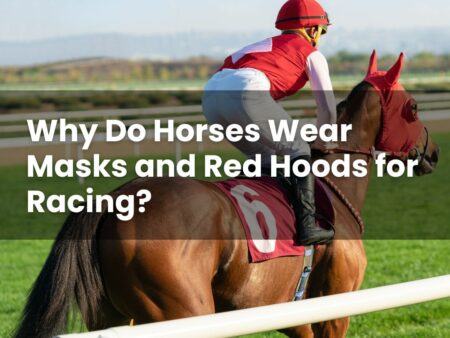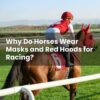Horse racing is one of the oldest sports in the UK, and its courses span countryside hillsides, coastal towns and busy city suburbs. Each track carries its own identity, shaped by geography, history and the types of racing it hosts.
This guide explores the most well-known racecourses across the UK, explains what makes them unique, and offers a closer look at how they operate.
If you’re considering a visit, interested in how betting works at the races, or simply curious about the venues themselves, this guide will walk you through the essentials.
Big Names, Bigger Crowds: Most Popular Racecourses
A handful of UK racecourses are widely recognised, either for the calibre of racing they host or the traditions attached to them.
Aintree, near Liverpool, is known for the Grand National. This National Hunt race is watched by millions and attended by around 70,000 on the day. The course features some of the most demanding fences in British racing, including Becher’s Brook and The Chair, which make it a true challenge for both horse and jockey.
In Berkshire, Ascot hosts the Royal Ascot each June. This five-day flat racing event is one of the UK’s most prestigious, drawing crowds of up to 60,000 daily. Races here often feature top-level horses competing at Group 1 standard. There is also a strict dress code in certain enclosures, and members of the Royal Family sometimes attend, adding to its formal atmosphere.
Over in Gloucestershire, the Cheltenham Racecourse holds the Cheltenham Festival in March. Known for jump racing, this four-day meeting includes the Cheltenham Gold Cup and attracts over 250,000 people across the event. Horses compete over hurdles and fences, and the event is popular with both British and Irish fans.
Epsom Downs, in Surrey, is home to The Derby. First run in 1780, this flat race is held on a course with an unusual camber and a downhill section, testing balance and stamina. It’s seen as one of the sport’s biggest races for three-year-old horses.
York Racecourse is located close to the city centre and hosts the Ebor Festival in August. The highlight is the Ebor Handicap, a flat race over 1 mile 6 furlongs with a large field and significant prize fund. York’s long straight makes it a fair test of speed and timing.
Other well-respected venues include Newmarket, often referred to as the “home of racing” due to its long-established role in British flat racing, and Goodwood, set in the South Downs, which is known for its scenic layout and the annual Glorious Goodwood meeting.
When attending a racecourse, the experience can vary depending on the size of the event. Larger festivals are often busier, with more choice for food, drink and betting services, while quieter fixtures can offer a slower pace and easier access to facilities. Betting options at the racecourse may include on-course bookmakers, betting shops and betting apps. Odds might differ slightly between each, depending on market activity and commission.
Betting odds show the potential return on a stake. For example, odds of 4/1 mean that for every £1 you stake, you could receive £4 in winnings, plus your £1 stake back, if your selection wins. However, as racing outcomes depend on many factors—such as horse form, jockey skill and weather—results can’t be predicted with certainty. There’s no guaranteed method for choosing a winning horse, and even favourites can be beaten.
Full List of UK Racecourses by Region
There are currently 61 licensed racecourses in the UK. Most are based in England, with additional tracks in Scotland, Wales and Northern Ireland. These courses host both flat and jump racing, with some specialising in one format, while others may offer both.
Racecourses in England
English racecourses range from coastal tracks, to inland sites and include a mix of flat, jump and all-weather surfaces. Some operate under turf conditions, while others have artificial surfaces for year-round racing.
A selection of well-known courses includes:
- Aintree (Merseyside)
- Ascot (Berkshire)
- Bath (Somerset)
- Beverley (East Yorkshire)
- Brighton (East Sussex)
- Carlisle (Cumbria)
- Cartmel (Cumbria)
- Catterick (North Yorkshire)
- Chelmsford City (Essex – all-weather surface)
- Cheltenham (Gloucestershire)
- Chester (Cheshire)
- Doncaster (South Yorkshire)
- Epsom Downs (Surrey)
- Exeter (Devon)
- Fakenham (Norfolk)
- Fontwell Park (West Sussex)
- Goodwood (West Sussex)
- Great Yarmouth (Norfolk)
- Haydock Park (Merseyside)
- Hereford (Herefordshire)
- Hexham (Northumberland)
- Huntingdon (Cambridgeshire)
- Kempton Park (Surrey – also all-weather)
- Leicester (Leicestershire)
- Lingfield Park (Surrey – all-weather and turf)
- Ludlow (Shropshire)
- Market Rasen (Lincolnshire)
- Newbury (Berkshire)
- Newcastle (Tyne and Wear – all-weather and turf)
- Newmarket (Suffolk)
- Newton Abbot (Devon)
- Nottingham (Nottinghamshire)
- Plumpton (East Sussex)
- Pontefract (West Yorkshire)
- Redcar (North Yorkshire)
- Ripon (North Yorkshire)
- Salisbury (Wiltshire)
- Sandown Park (Surrey)
- Sedgefield (County Durham)
- Southwell (Nottinghamshire – all-weather and jump)
- Stratford-on-Avon (Warwickshire)
- Taunton (Somerset)
- Thirsk (North Yorkshire)
- Uttoxeter (Staffordshire)
- Warwick (Warwickshire)
- Wetherby (West Yorkshire)
- Wincanton (Somerset)
- Windsor (Berkshire)
- Wolverhampton (West Midlands – all-weather)
- Worcester (Worcestershire)
- York (North Yorkshire)
Each course has its own timetable, with races spread across the calendar, depending on the surface and season.
Tracks in Scotland, Wales & Northern Ireland
Outside of England, racecourses add further variety to the UK’s racing scene, offering different scenery, styles and traditions.
Scotland:
- Ayr (South Ayrshire)
- Hamilton Park (South Lanarkshire)
- Kelso (Scottish Borders)
- Musselburgh (East Lothian)
- Perth (Perth and Kinross)
Wales:
- Bangor-on-Dee (Wrexham area)
- Chepstow (Monmouthshire)
- Ffos Las (Carmarthenshire)
Northern Ireland:
- Downpatrick (County Down)
- Down Royal (County Antrim)
These tracks feature a mixture of flat and jump racing. Some fixtures are low-key and regional, while others host important fixtures in the racing calendar.
It may be worth checking each racecourse’s official site, or a trusted fixture list before planning a visit, as dates and race types can vary.
How Many UK Racecourses Are There In Total?
As of 2025, the UK has 61 licensed racecourses. This figure includes 59 in Great Britain and 2 in Northern Ireland. Some courses run flat racing only, while others focus on jumps (also called National Hunt), and a few alternate between both formats depending on the time of year.
Flat racing typically takes place in the warmer months and is run over shorter distances, usually without obstacles. National Hunt racing features hurdles or fences and is more commonly seen in autumn and winter. Five of the UK’s tracks feature all-weather surfaces (synthetic tracks that can be used year-round), including Chelmsford City, Wolverhampton and Southwell.
Across all these venues, hundreds of race meetings take place annually. Fixtures range from small local events, to internationally recognised festivals. Entry prices, on-site services and accessibility can differ from course to course, so checking ahead can be useful.
What Makes a Great Horse Racing Track?
Several factors shape how a racecourse is perceived, both by racing professionals and spectators.
Location can influence how easy it is to reach, what kind of view you get, and what other activities are available nearby. Courses like Goodwood offer countryside views, while others like Chester or Newcastle are near town centres.
The layout of a track also plays a role. Some tracks are tight and left-handed (turning anti-clockwise), while others are wide, straight or undulating. These features affect how horses run, and certain horses may perform better on one type of course than another.
Facilities matter too. Grandstands, seating, food and drink options, on-course bookmakers and toilets can all affect a race-day experience. Accessibility features, such as lifts or viewing areas may be important for some visitors.
The quality of racing also stands out. Courses that host Group or Grade 1 races—terms used for the highest standard in flat and jump racing—tend to attract strong horses and experienced jockeys.
Betting is a regular part of the race day for many visitors. On-course bookmakers may offer odds that differ from those online or in betting shops. Some also offer ‘starting price’ or ‘SP’ odds, which are calculated at race time. Others may provide fixed odds at the time you place your bet. It can be sensible to check what you’re being offered and understand the terms. If you’re using online sportsbooks, each may have its own rules, minimum stakes or potential payout limits. Reading these terms can help avoid confusion later.
No betting system can guarantee a win. Horse racing involves multiple unpredictable factors—from track condition to horse fitness. There’s no single “best” strategy. What works for one bettor may not suit another.
Visual: Map of UK Racecourses
If you’re planning a visit, maps can make choosing a course easier. The British Horseracing Authority (BHA) website offers an interactive map where you can view all UK racecourses by region. The Racing Post also provides online tools showing course layouts, upcoming fixtures and directions.
Online maps such as Google Maps can help with travel times, parking and nearby accommodation. If you’re heading to a large event, some racecourses may publish venue maps to help you navigate the site on race day. These typically show entrances, viewing areas, betting points and hospitality zones.
Printed guides are available too and may include travel tips or local highlights. Seeing the full spread of racecourses across the UK can help you plan your day, or even choose a new venue you haven’t visited before.
Gambling involves risk. Outcomes are unpredictable, and no return is guaranteed. If you decide to place a bet, consider setting a budget in advance. UK-licensed betting operators often provide safer gambling tools such as deposit limits, reality checks and temporary breaks. These tools can help you keep track of your activity and make informed choices based on your own preferences and comfort.








